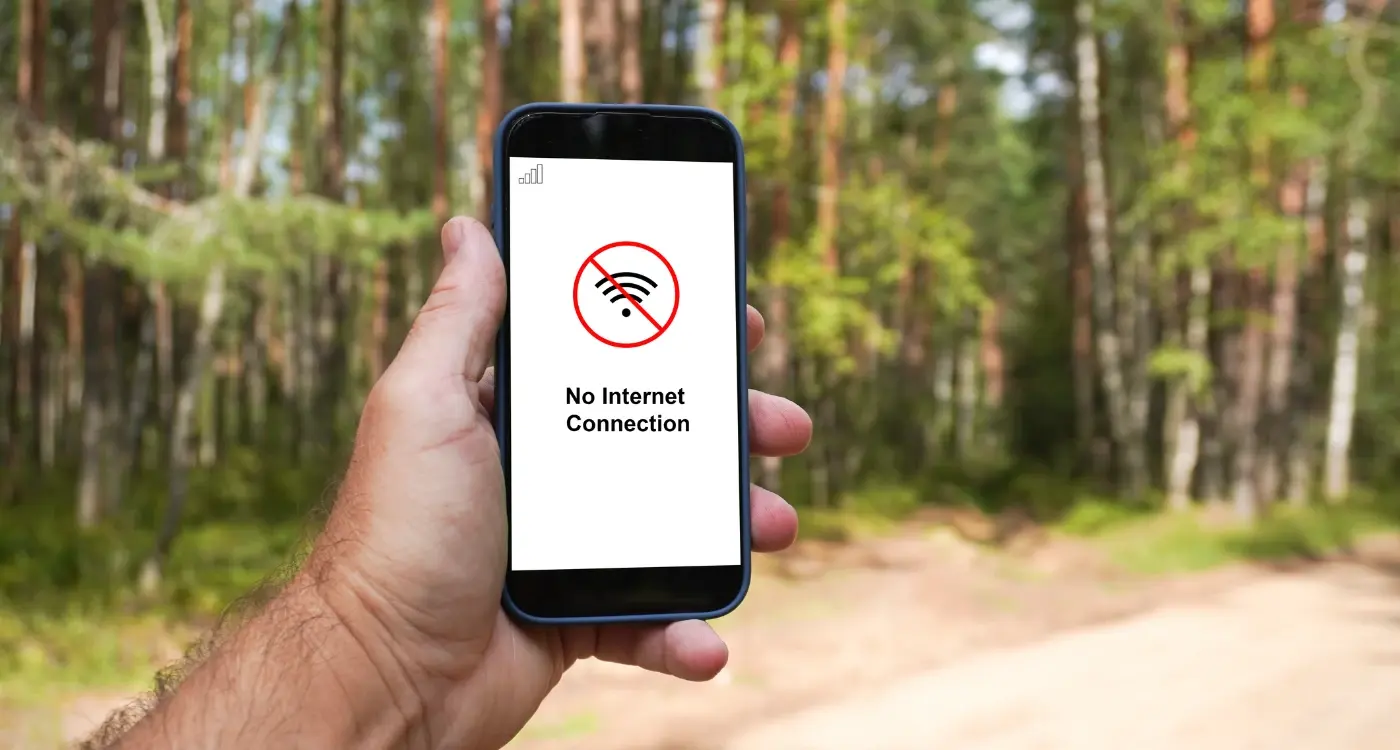How Do I Add Voice Control Features To My Mobile App?
Every day, millions of people struggle to use their mobile phones because traditional touch interfaces don't work for them. Maybe they have visual impairments, motor difficulties, or simply have their hands full whilst trying to navigate an app. Voice control isn't just a trendy feature—it's a lifeline that makes mobile apps accessible to everyone, regardless of their physical abilities or circumstances.
When we talk about voice control in mobile apps, we're really talking about giving people choice in how they interact with technology. Some users might prefer speaking to their phone because it's faster than typing. Others need voice control because it's the only way they can use their device effectively. This is where assistive technology becomes so powerful—it levels the playing field.
The best mobile app experiences are the ones that adapt to users, not the other way around
Adding voice control to your mobile app isn't just about following accessibility guidelines (though that's important too). It's about creating a better experience for all your users whilst opening your app to people who might not have been able to use it before. Throughout this guide, we'll explore how to implement voice features that work brilliantly for everyone—from choosing the right technology to designing interfaces that make sense when you can't see them.
Understanding Voice Control in Mobile Apps
Voice control in mobile apps is exactly what it sounds like—using your voice to make things happen instead of tapping buttons or typing. Think of it like having a conversation with your phone, but instead of getting strange looks from people on the bus, you're actually getting stuff done!
When you ask Siri to set a timer or tell Google Assistant to play your favourite song, that's voice control in action. But it goes much deeper than just asking questions. Modern voice control can handle complex tasks like booking appointments, making purchases, or controlling smart home devices—all through simple spoken commands.
How Voice Control Actually Works
The magic happens in three stages. First, your device listens to what you're saying and converts those sound waves into digital data. Then, clever algorithms figure out what words you actually said (this is called speech recognition). Finally, the app works out what you want it to do and makes it happen.
What makes this particularly interesting is that voice control isn't just about replacing buttons with words. It opens up entirely new ways for people to interact with apps—ways that can be faster, more natural, and accessible to people who might struggle with traditional touch interfaces. The technology has come a long way from those early days when you had to speak like a robot to get anything working!
The Benefits of Voice Control for App Users
Voice control transforms how people interact with mobile apps—and the benefits go far beyond what you might expect. When users can speak to your app instead of tapping and swiping, they experience a level of convenience that feels almost magical. They can send messages whilst cooking dinner, navigate maps when their hands are full, or search for content without looking at their screen.
The accessibility benefits are where voice control really shines. People with motor impairments who struggle with touchscreens can navigate apps effortlessly using their voice. Those with visual impairments can interact with your mobile app without relying solely on screen readers. This assistive technology opens doors for users who might otherwise find your app difficult or impossible to use.
Speed and Efficiency Gains
Voice commands are often faster than typing, especially for longer inputs. Users can dictate text messages, search queries, or form entries in seconds rather than minutes. This speed advantage becomes even more pronounced on smaller screens where typing accuracy suffers.
The Multitasking Advantage
Voice control enables true multitasking. Users can control your app whilst driving, exercising, or performing other tasks. This hands-free operation expands when and where people can use your mobile app, increasing engagement and user satisfaction.
- Reduced physical strain on hands and fingers
- Better usability in low-light conditions
- Improved experience for elderly users
- Support for users with temporary injuries
- Enhanced privacy when typing isn't appropriate
Start with simple voice commands for common actions before building complex conversational features—users need to build confidence with basic voice interactions first.
Voice Control Technologies and Platforms
Right, let's talk about the actual tech that makes voice control work—because knowing your options is half the battle when you're planning your implementation. There are three main players in this space, and each one has its own strengths and quirks that you'll need to consider.
The Big Three Voice Platforms
Apple's SiriKit is probably the most straightforward if you're building for iOS. It integrates beautifully with the existing Siri experience that users already know, which means there's less of a learning curve. Google Assistant works across both Android and iOS, giving you broader reach—plus it's genuinely good at understanding natural language. Amazon's Alexa Voice Service might seem like an odd choice for mobile apps, but it's worth considering if your app connects to smart home devices or if you want that familiar Alexa experience.
Beyond the Obvious Choices
Don't overlook speech recognition APIs like Google's Cloud Speech-to-Text or Azure Speech Services. These give you more control over the voice processing, though you'll need to handle more of the heavy lifting yourself. The trade-off is flexibility—you can customise the experience exactly how you want it rather than being locked into someone else's interpretation of how voice should work. I've seen this approach work really well for apps that need to understand industry-specific terminology or unusual accents.
Planning Your Voice Control Implementation
Right then, let's talk about planning your voice control implementation—because jumping straight into coding without a proper plan is like trying to build a house without blueprints. You might get something that looks like a house, but it'll probably fall over when someone sneezes! I've seen too many developers get excited about voice features and rush into development, only to realise they've built something that nobody can actually use.
The first thing you need to figure out is which parts of your mobile app would actually benefit from voice control. Not everything needs to be voice-activated—sometimes traditional touch controls work perfectly well. Focus on actions that make sense for voice commands like searching, navigation, or data input where typing might be awkward.
Understanding Your Users' Needs
Think about who will be using your voice features and why. Are you targeting people who need assistive technology to navigate your app? Or maybe busy professionals who want hands-free operation? Each group has different requirements, and your implementation should reflect that.
Good voice control isn't about adding fancy features—it's about making your app more accessible and useful for everyone
You'll also want to consider the technical side early on. Which voice recognition platform will you use? How will you handle background noise? What happens when the voice recognition fails? Planning these scenarios upfront will save you countless headaches later and ensure your voice features actually enhance the user experience rather than frustrating people.
Designing Voice User Interfaces
Voice interfaces work completely differently from the visual ones we're used to—there's no screen to tap, no buttons to press, just conversation. This means we need to think about design in a whole new way. Instead of creating beautiful layouts and colour schemes, we're crafting dialogues and conversations that feel natural and helpful.
The most important thing to understand is that people don't speak like they type. When someone talks to your app, they'll use everyday language, make mistakes, and sometimes change their mind halfway through a sentence. Your voice interface needs to handle all of this gracefully without making users feel frustrated or confused.
Creating Natural Conversations
Start by writing out exactly what your app should say and how users might respond. Think about different ways people might ask for the same thing—some will be direct ("Play music"), others more casual ("I fancy listening to something"). Your app needs to understand both and respond in a friendly, consistent tone that matches your brand.
Handling Mistakes and Confusion
People will mishear your app, and your app will mishear people. Plan for this by designing clear error messages and offering simple ways to correct mistakes. Always give users options and never leave them wondering what to say next.
Building and Testing Voice Features
Right, let's get our hands dirty with the actual building process. When I'm developing voice features for a mobile app, I always start small—one command at a time. Don't try to build everything at once; you'll end up with a mess that's harder to debug than a spaghetti junction!
Your development environment needs to handle speech recognition and text-to-speech capabilities. Most platforms like iOS and Android have built-in APIs for this, but you might want to consider third-party solutions if you need more advanced features. I've found that testing early and often saves headaches later.
Testing Voice Commands Properly
Testing voice features isn't like testing regular app functions—people speak differently, have accents, and might be using your app in noisy environments. Test with real people, not just your development team. Get your mum to try it, your neighbour, anyone who'll give you honest feedback.
Pay special attention to accessibility during testing. Voice control should work seamlessly with screen readers and other assistive technology. This means testing with users who actually rely on these features daily.
Record your test sessions—you'll spot patterns in how people naturally speak to your app that you might miss in the moment.
Common Pitfalls to Avoid
The biggest mistake I see is assuming everyone speaks like you do. Different accents, speaking speeds, and background noise levels all affect recognition accuracy. Build in fallback options and always provide visual feedback when voice commands are processed.
Making Voice Control Accessible for Everyone
When I'm working with clients on voice features, accessibility often comes up as an afterthought—but it shouldn't be. Voice control can be a game-changing feature for users with disabilities, yet many developers don't consider the full range of needs their users might have.
The biggest misconception I see is that voice control automatically makes apps more accessible. That's not always true. Some users can't speak clearly due to speech impediments, others might be in noisy environments, and some simply prefer not to use voice commands in public spaces.
Making Voice Features Work for Everyone
The key is providing multiple ways to achieve the same result. Never make voice the only option for any feature. Your app should always offer traditional touch controls alongside voice commands—this gives users choice and flexibility.
Speech recognition accuracy varies dramatically between users. The technology works brilliantly for some but struggles with accents, speech patterns, or medical conditions that affect pronunciation. Test your voice features with diverse user groups, not just your development team.
Smart Implementation Strategies
- Provide visual feedback for all voice commands
- Allow users to adjust speech recognition sensitivity
- Include text alternatives for voice-only prompts
- Support both voice and touch for navigation
- Test with users who have different speech patterns
Remember that accessibility isn't just about compliance—it's about creating genuinely inclusive experiences. When you design voice features that work for everyone, you're not just helping users with disabilities; you're making your app better for all users.
Conclusion
Adding voice control features to your mobile app isn't just about keeping up with trends—it's about creating a genuinely better experience for your users. After working with countless clients over the years, I've seen firsthand how voice features can transform an app from good to great; they make apps faster to use, more accessible to people with disabilities, and frankly, more enjoyable for everyone.
The technology is more accessible than ever before. Whether you choose to work with Apple's SiriKit, Google's Speech Recognition API, or Amazon's Alexa Skills Kit, the tools are there and they're getting better all the time. Yes, there are challenges—privacy concerns, handling different accents, dealing with background noise—but these are all solvable problems with the right approach.
What excites me most is how voice control opens up your app to users who might have struggled with traditional touch interfaces. People with motor disabilities, visual impairments, or those who simply prefer speaking to typing can all benefit from well-implemented voice features. That's not just good business; it's the right thing to do.
Start small, test thoroughly, and remember that voice control works best when it complements your existing interface rather than replacing it entirely. Your users will thank you for it.
Share this
Subscribe To Our Learning Centre
You May Also Like
These Related Guides

Should My Mobile App Work Without an Internet Connection?

How Do I Create a Matching Algorithm That Actually Works?



